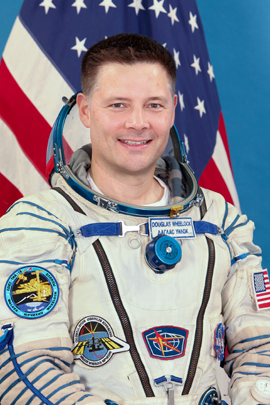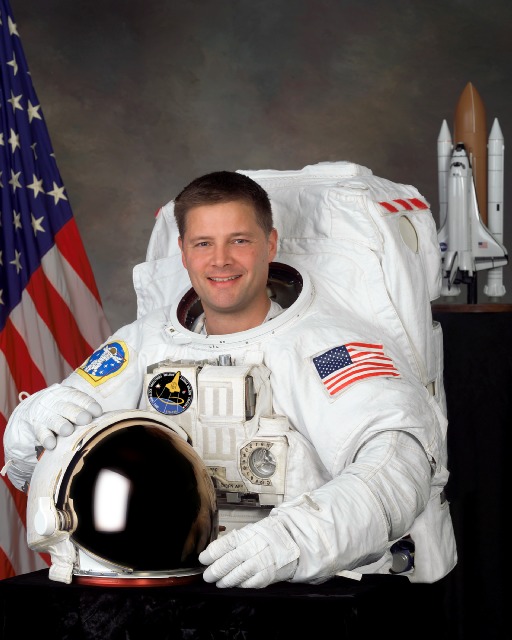
.

 |
Douglas Harry Wheelock |  |
|
| RSC
Energia bio
(Dec 09) |
 Douglas
H. WHEELOCK Douglas
H. WHEELOCK
ISS-22/23 Flight Engineer,
DATE AND PLACE OF BIRTH:
EDUCATION:
FAMILY STATUS: married.
AWARDS: Meritorious Service Medal, Army Achievement Medal, National Defense Service Medal, Army Commendation Medal. WORK EXPERIENCE:
In June 1998 he was enlisted in NASA astronaut corps as a pilot (the
17th selection). Since August 1998 he passed a course of general space
training. Having completed his studies in August 1999 he was qualified
as a Shuttle pilot and assigned to NASA Astronaut Office, ISS Flight Control
Department where he was involved in the following issues: organization
of interaction with Russia and provision of compatibility of both countries
hardware - software at the station. Wheelock took part in support of the
first four unmanned spacecraft Progress flights to the ISS. In 2001 he
was assigned as the support astronaut for the ISS-2 and ISS-4 crews. Since
August 2002 he worked as a spacecraft Communicator and was the primary
communication link between the crews.
Wheelock performed his first flight from October 23 to November 7, 2007
as a mission specialist in the crew of the Discovery Shuttle (STS-120).
The main objective of the flight was to deliver the new Harmony module
to the International Space Station and deploy P6 Solar Arrays.
In July 2008 it was reported that he was assigned to the backup crew of Expedition 22 to the ISS. Concurrently it was reported that he was assigned to the prime crew of Expedition 24 to the ISS. On September 21, 2008 his assignment was confirmed in the ISS flight plan published by Roscosmos press-service. On November 21, 2008 his assignment was officially confirmed by NASA (release ¹ 08-306) when declaring the ISS-20-ISS-26 crew members. December 2009
|
| RSC
Energia bio:
(May 2010) |
 Douglas
Harry WHEELOCK Douglas
Harry WHEELOCK
Colonel, U.S. Army,
DATE AND PLACE OF BIRTH:
EDUCATION:
FAMILY STATUS: married.
AWARDS: Meritorious Service Medal, Army Achievement Medal, National Defense Service Medal, Army Commendation Medal. WORK EXPERIENCE:
In June 1998 he was enlisted in NASA astronaut corps as a pilot (the
17th selection). Since August 1998 he passed a course of general space
training. Having completed his studies in August 1999 he was qualified
as a Shuttle pilot and assigned to NASA Astronaut Office, ISS Flight Control
Department where he was involved in the following issues: organization
of interaction with Russia and provision of compatibility of both countries
hardware - software at the station. Wheelock took part in support of the
first four unmanned spacecraft Progress flights to the ISS. In 2001 he
was assigned as the support astronaut for the ISS-2 and ISS-4 crews. Since
August 2002 he worked as a spacecraft Communicator and was the primary
communication link between the crews.
Wheelock performed his first flight from October 23 to November 7, 2007
as a mission specialist in the crew of the Discovery Shuttle (STS-120).
The main objective of the flight was to deliver the new Harmony module
to the International Space Station and deploy P6 Solar Arrays.
In July 2008 it was reported that he was assigned to the backup crew of Expedition 22 to the ISS. Concurrently it was reported that he was assigned to the prime crew of Expedition 24 to the ISS. On September 21, 2008 his assignment was confirmed in the ISS flight plan published by Roscosmos press-service. On November 21, 2008 his assignment was officially confirmed by NASA (release ¹ 08-306) when declaring the ISS-20-ISS-26 crew members. May 2010.
|
|